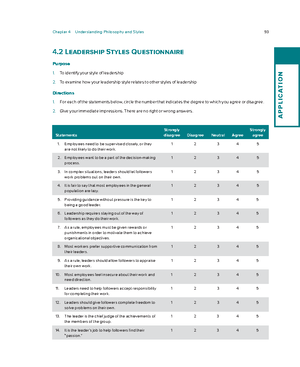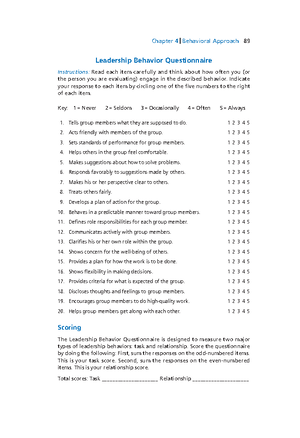- Information
- AI Chat
Was this document helpful?
Followership Questionnaire; Followership Questionnaire
Module: Leadership and Management
9 Documents
Students shared 9 documents in this course
University: University of Lincoln
Was this document helpful?

326 LEADERSHIP THEORY AND PRACTICE
LEADERSHIP INSTRUMENT _________________________
As discussed earlier in this chapter, Kelley (1992) developed a typology that
categorized followers into one of five styles (exemplary, alienated, conform-
ist, passive, and pragmatist) based on two axes (independent thinking and
active engagement). These different dimensions of followership became the
basis for Kelley’s Followership Questionnaire, a survey that allows follower-
ship style to be determined through an empirical approach, rather than
through observation.
Followership Questionnaire
Instructions: Think of a specific leader–follower situation where you were in
the role of follower. For each statement, please use the scale below to indi-
cate the extent to which the statement describes you and your behavior in
this situation.
1. Does your work help you fulfill some societal goal or
personal dream that is important to you?
0123456
2. Are your personal work goals aligned with the
organization’s priority goals?
0123456
3. Are you highly committed to and energized by
your work and organization, giving them your
best ideas and performance?
0123456
4. Does your enthusiasm also spread to and energize your
coworkers?
0123456
5. Instead of waiting for or merely accepting what the
leader tells you, do you personally identify which
organizational activities are most critical for achieving
the organization’s priority goals?
0123456
6. Do you actively develop a distinctive competence in those
critical activities so that you become more valuable to the
leader and the organization?
0123456
Key:
Rarely Occasionally Almost
Always
12 3 4 50 6





